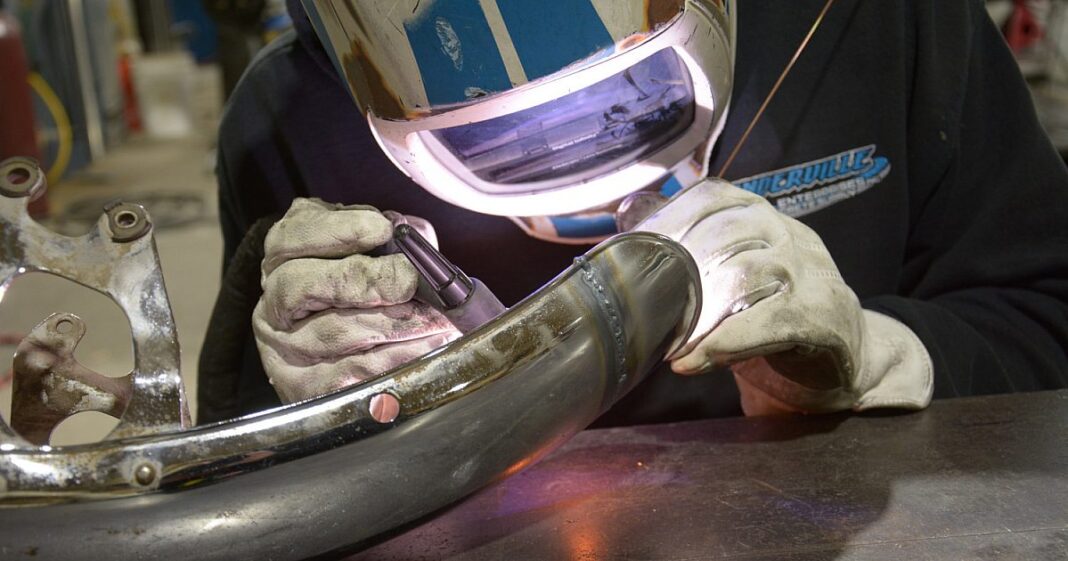There comes a point in every builder’s journey where bolt-on parts just don’t cut it anymore. It’s a creative wall you hit when the vision in your head—that perfect subframe hoop, the high-swept exhaust, the custom bracket that relocates everything just so—can’t be found in a catalog. This is the moment you graduate from assembling to creating, and the tool that unlocks this next level of mastery is the welder.
For many, welding seems like a dark art, an intimidating craft reserved for grizzled fabricators in cavernous workshops. But the reality is that modern technology has made welding more accessible than ever. The barrier to entry isn’t a ten-year apprenticeship; it’s a bit of knowledge, a healthy respect for safety, and the right gear. Laying down a clean, strong bead of molten steel is one of the most satisfying skills you can acquire, transforming you from a parts-fitter into a true builder.
So, if you’re ready to stop dreaming about that one-off part and start making it, we’ve put together a guide to getting your home workshop set up for welding. We’ll break down the essential gear, explain the difference between the two most common processes, and point you to the tools you need so you can spend less time shopping and more time making sparks fly.
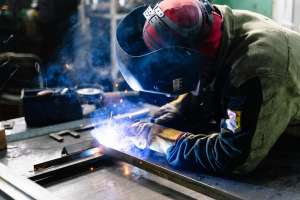
THE CONUNDRUM: MIG VS. TIG
Before you buy anything, you need to understand the fundamental choice: MIG or TIG? Both have their place in a motorcycle workshop, but they are different animals.
MIG welding is the versatile workhorse. It uses a wire-feed gun that continuously feeds a consumable wire electrode into the weld pool while shielding it with gas. It’s relatively easy to learn—often described as a “point-and-shoot” process—and it’s fast. For structural work such as fabricating frame tabs, battery boxes, or brackets, MIG is king. It lays down strong welds quickly and is very forgiving on less-than-perfectly clean metal.

If MIG is the workhorse, TIG is the artist’s scalpel. This process uses a tungsten electrode to create the arc and requires the welder to feed filler rod into the pool with their other hand. This is all controlled by a foot pedal. It’s a slower, more deliberate process that requires more skill and coordination, but the results are unparalleled. TIG welding produces the beautiful, precise “stack of dimes” welds you see on high-end custom exhausts and aluminum parts. It offers incredible control over heat, making it ideal for thin materials and exotic metals.
While the beauty of a TIG weld is seductive, for 90% of home builders, a MIG welder is the smarter first investment. Its versatility, speed, and gentler learning curve mean you’ll be fabricating usable parts for your motorcycle much faster.
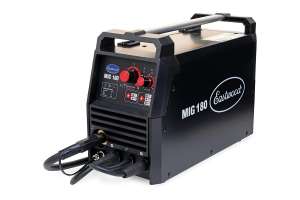
The Welder
For a home garage, you’ll want at least a 120V MIG welder that can run on a standard household outlet. Look for a machine that can handle both flux-core (no gas needed, good for outdoor work) and gas-shielded MIG welding, such as the Eastwood 180 Amp Dual Voltage MIG Welder. This machine is a fantastic starting point. It’s a capable and has the ability to grow with your ability. It can run off 120V or 240V via adapters and the power to handle everything from thin sheet metal for a seat pan to 5/16” steel or stainless—covering virtually any task on a motorcycle project. It’s reliable, easy to set up, and comes from a brand trusted by professionals. [The Eastwood Company]
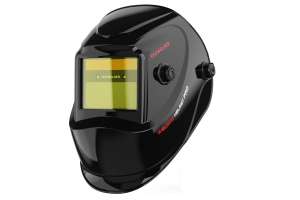
Safety Gear
Welding involves molten metal, intense UV radiation, and high temperatures. This isn’t the place to be a hero. Basic protective gear is going to go a long way. An auto-darkening helmet is essential. These helmets instantly darken the lens the moment an arc is struck, so you can see your work clearly before you start welding. The YesWelder Auto Darkening Helmet offers features found on much more expensive models, including a massive viewing area, true-color lens technology (so you’re not just seeing green), and four arc sensors for reliability. It’s comfortable and provides excellent protection without breaking the bank. [YesWelder]
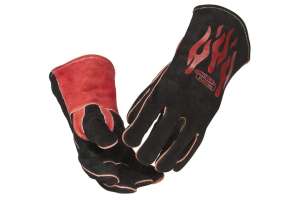
Next, you’ll need gloves that protect from heat and spatter but still offer some dexterity. The Lincoln Electric Welding Gloves are heavy-duty MIG gloves made from heat and flame-resistant leather. They offer excellent protection that extends past the wrist and will stand up to the abuse of grinding and fabricating. [The Lincoln Electric Company]
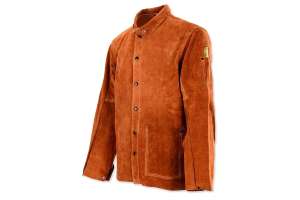
A proper jacket protects your arms and torso from UV burns and hot sparks. While a flame-resistant cotton jacket is a good start, a cowhide leather jacket offers superior protection and durability. The QeeLink Leather Welding Jacket is heavy-duty, but still comfortable for extended sessions.
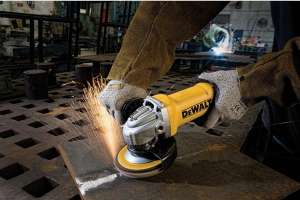
Tools & Consumables
You can’t just weld; you need to prep and handle your material. The unsung hero of any fabrication project is the angle grinder. You’ll use it for cutting metal, grinding down welds, cleaning rust, and prepping surfaces. The DEWALT 4.5-Inch Angle Grinder is the perfect size for motorcycle work. This DEWALT model is a powerful, reliable workhorse that will last for years. Don’t forget to buy an assortment of cutting discs, grinding wheels, and flap discs. [DEWALT]
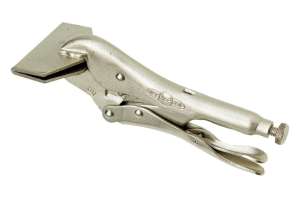
Holding your work securely and perfectly aligned is the secret to good welds. For this IRWIN Locking Clamps are indispensable. Get a few of these, along with a set of welding magnets to hold pieces at perfect 90 or 45-degree angles before you tack them in place. [IRWIN TOOLS]
Additionally, you’ll need a shielding gas tank (a C25 mix of 75% Argon/25% CO2 is the standard for steel), a spool of MIG wire, and some anti-spatter spray to keep your nozzle clean.
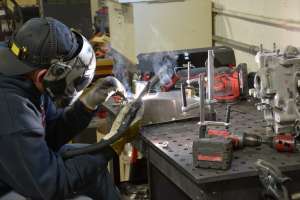
BUILD, DON’T BUY
Stepping into the world of welding is like unlocking a cheat code for motorcycle customization. The initial investment in gear might seem steep, but the freedom it gives you to create, repair, and modify is priceless. It’s a skill that builds with practice, and with every project, your confidence and capabilities will grow.
So clear some space in the garage, gear up, and get ready to burn some wire. The ability to fuse metal with electricity is one of the most rewarding skills you can learn, and it’s the definitive step in transforming your vision into a rolling, fire-breathing reality.
This article contains affiliate links, which means Bike EXIF may receive a commission if you click a link and purchase something we referenced.
